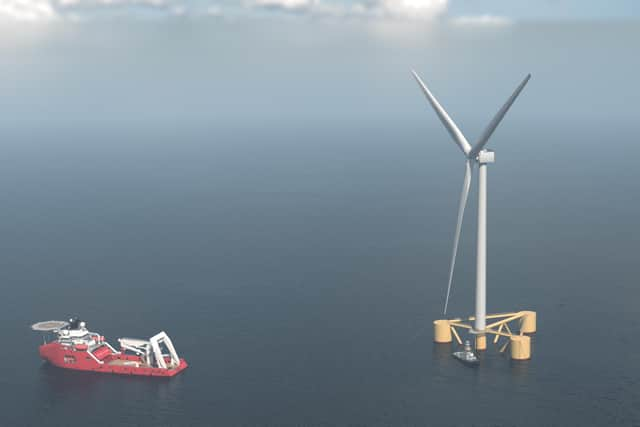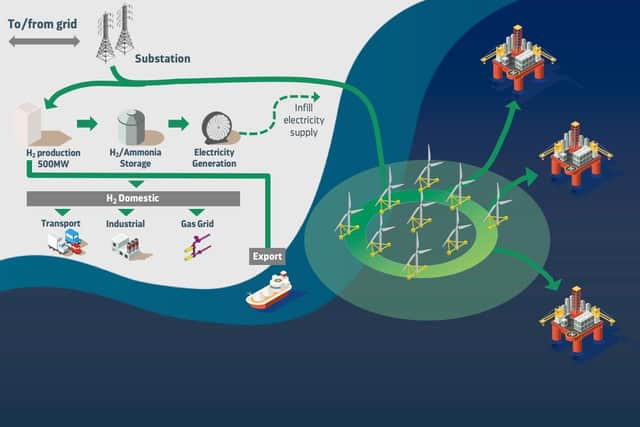Giant floating wind farm and green gas scheme in Scotland could be UK's 'biggest emissions abatement project to date'
The £10 billion infrastructure project would see more than 200 floating turbines anchored in seas around Shetland and the central North Sea and associated onshore facilities creating carbon-free hydrogen.
The turbines will be among the largest in the world and will feed half of the power to the offshore facilities and the excess to onshore green hydrogen plants.
Developers have said the scheme would be the UK’s “single biggest emissions abatement project to date” and could fast-track decarbonisation of the oil and gas industry, helping the UK achieve its climate targets.


Projections suggest around 20 million tonnes of climate-warming carbon dioxide emissions would be saved each year and thousands of green offshore jobs created.
The project is the brainchild of developer Cerulean Winds, which estimates that the current 160,000 oil and gas roles can be safeguarded and 200,000 new positions within the floating wind and hydrogen sectors established within the next five years.
The venture is now calling on UK and Scottish governments to make an “exceptional” case to deliver an “extraordinary” outcome for the economy and the environment.


A formal request for seabed leases has been submitted to Marine Scotland.
Cerulean Winds chiefs believe the risk of not moving quickly on basin-wide decarbonisation would undermine objectives in Westminster’s North Sea Transition Deal, which sets out how the oil and gas sector and government will work together to meet tough emissions reduction targets.
Dan Jackson, founding director of Cerulean Winds, said: “The UK is progressing the energy transition, but a sense of urgency and joined-up approach is required to enable rapid decarbonisation of oil and gas assets or there is a risk of earlier decommissioning and significant job losses.


“Emissions are quite rightly no longer acceptable, but with emissions penalties and taxes coming, the UK oil and gas industry’s role in home-grown energy security during the transition could be threatened unless current decarbonisation efforts can be greatly speeded up.
“The consequences of not moving quickly enough will be catastrophic for the economy and the environment.”
The proposed development has potential for hydrogen exports worth £1 billion, according to Cerulean, and would require no state subsidies while generating “hundreds of millions of pounds to government revenue” via leases and taxation through to 2030.
Mr Jackson added: “We have a transformative development that will give the UK the opportunity to rapidly decarbonise oil and gas assets, safeguard many thousands of jobs and support a new green hydrogen supply chain.
“The decision to proceed with the scheme will ultimately rest with the Scottish Government and Marine Scotland and their enthusiasm for a streamlined regulatory approach.
“The ask is simply that an exceptional decision is made for an extraordinary outcome.
“We are ready to deliver a self-sustained development that will decarbonise the UKCS and be the single biggest emissions abatement project to date.”
European financial services group Société Générale is acting as an adviser to Cerulean Winds.
Allan Baker, global head of power advisory and project finance for Société Générale, said the project represents a “transformational proposition for the UK”.
If plans get the go-ahead, construction would start next year with energisation beginning in 2024.
